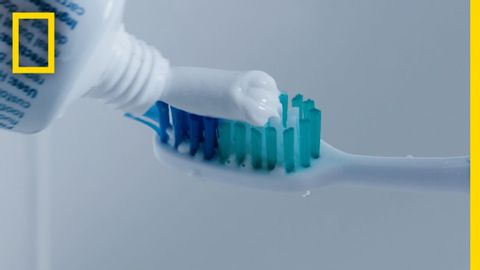
字幕與單字
你的牙刷如何成為塑膠危機的一部分? (How Your Toothbrush Became a Part of the Plastic Crisis | National Geographic)
00
Courtney Shih 發佈於 2021 年 01 月 14 日收藏
影片單字
gross
US /ɡros/
・
UK /ɡrəʊs/
- n. (c./u.)一籮(144個);總額,總量;毛重
- v.t.獲得...總收入(或毛利)
- adj.令人厭惡的;總計的;未扣除的;粗俗的;令人噁心的
B1 中級多益高級英檢
更多 使用能量
解鎖所有單字
解鎖發音、解釋及篩選功能
